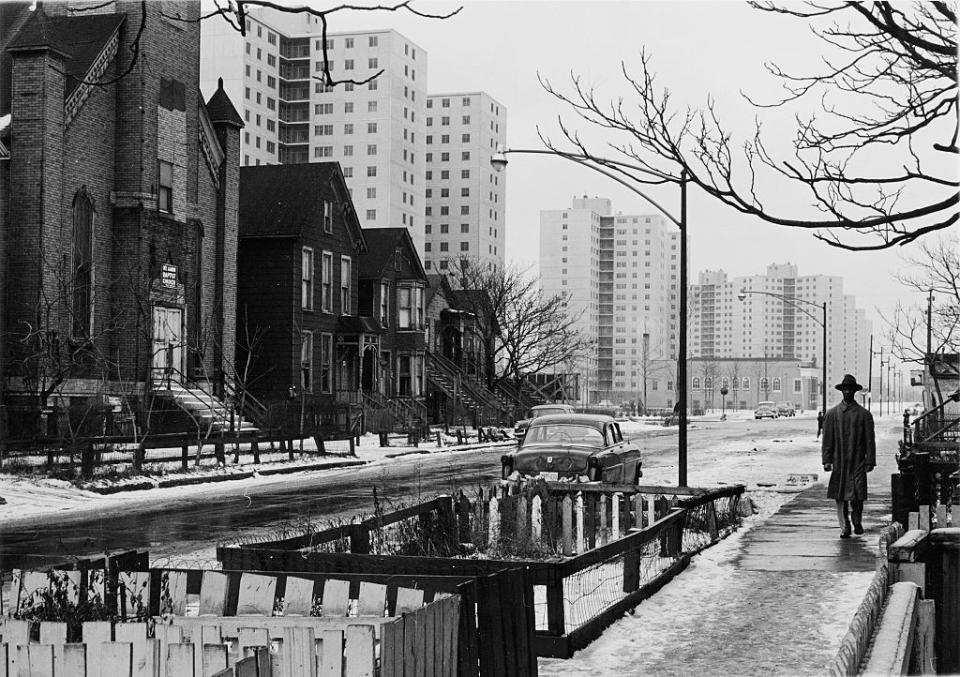This Program Is Teaching Life Lessons to Middle Schoolers Through Architecture

One week in October, middle schoolers at Marymount School in Manhattan put away Math textbooks and Science equipment and shift their focus to a subject not often touched on in grades six through eight: Classical Architecture. During this five-day stretch, students pay visits to some of the most impressive examples of architecture around their campus—such as the Beaux Arts building of the Metropolitan Museum of Art—discover the engineering behind structural domes using models made from spaghetti and marshmallows, and dabble in areas of decorative arts, including decorative gilding. It's all part of New Heights, a program started by the Institute of Classical Architecture & Art at Marymount in 2015 and which has now expanded to eight schools (and counting!) around the country—including, for the first time, public schools.
The program stemmed from a conversation between ICAA president Peter Lyden and a Marymount alumna, who was remarking on the pronounced gender gap in the architecture field. How, she wondered, could we get more women interested in pursuing careers as architects? There seemed no better place to start than Marymount, an all-girls school with a faculty open-minded enough to devote classroom time to the unconventional subject.
"What's great about Marymount as a school is they want to teach all their girls to be leaders," says Lyden. "They want them to be vocal and interested. We were very keen on rolling this out nationally, but this seemed like the perfect place to start."
The ICAA's education director Edith Platten collaborated with Marymount's curriculum coordinator Jillian Pagliocca to develop a set of lessons that would not only be informative, but engaging enough to captivate a group of middle schoolers with no prior knowledge of architecture.
"Anytime you're collaborating between an educational institution and an outside group, there's a lot of communication that needs to happen to ensure students will be engaged pedagogically," says Pagliocca."You can't just talk to them and say interesting things for 45 minutes and expect them to get excited—but they will own the work if they play an active role in it."
So, Lyden and the ICAA leveraged the contacts of their many members to create a curriculum that combines history, lectures, creative experimentation, and hands-on and on-site learning. This year, students heard from top architects and designers—like Sarah Magness and Michael Romero—studied the architecture of the Metropolitan Museum of Art and Grand Central Terminal, and took gilding classes with James Boyd of Boyd Reath.

The program at Marymount takes full advantage of its setting in New York. "We live in such an architecturally rich, textured city, and I think it's easy to just go from place to place—kids and adults alike," says Pagliocca. "Most of us don't, as a rule, spend much time thinking about the built environment around us, and the walking tours around the Upper East Side really brought the neighborhood to life." Similarly, subsequent curriculums in different cities also tap into location-specific lessons.
This year, for the first time in New Heights history, Marymount students were also encouraged to look at architecture and urban planning through a sociopolitical lens.
"We had been thinking about how to further evolve it and put it in context with social justice," says Romero, an architect and ICAA member who has been involved with the program since its inception. "So in addition to talking about the Duomo and the history and beauty and engineering of the Renaissance, we talked about the idea of how architecture can create a sense of community and pride—or it doesn't."

At the beginning of the week, students watched Citizen Jane: Battle for the City, a documentary about the fight between activist and urban planner Jane Jacobs and New York's famous "power broker" and master builder, Robert Moses. This foundation provided a bridge between architecture as an aesthetic subject and its cultural and political impact.
"One of the main themes is empowerment of women and trying to get more women in architecture and related fields, but on top of that, we want to explore how this beautiful architecture, and these beautiful streets in areas, whether it be in New York or Chicago or otherwise, were wiped out for, quote-unquote, 'progress,'" says Romero. "And those were neighborhoods that tended to be poorer or minority neighborhoods."

Through this, the students learned about areas like Bronzeville, the Chicago neighborhood famous as an oasis of African American culture and business in the early 20th century (it was often referred to as the Black Metropolis), and which, as Romero puts it was "hollowed out" by racially-restrictive housing, highways, and other government projects. "We see the loss of community," he says.
By "using architecture to push in that direction," Romero says he hopes to instill in the students a more critical way of looking at their surroundings. "I know that they won't all go into architecture, but I hope that maybe in 15, 20 years, they'll remember this little program and how it maybe made them see things differently about the built environment and how they move around the world."
Learn more about New Heights and make a donation here.
Follow House Beautiful on Instagram.
You Might Also Like

